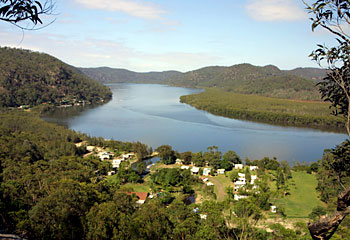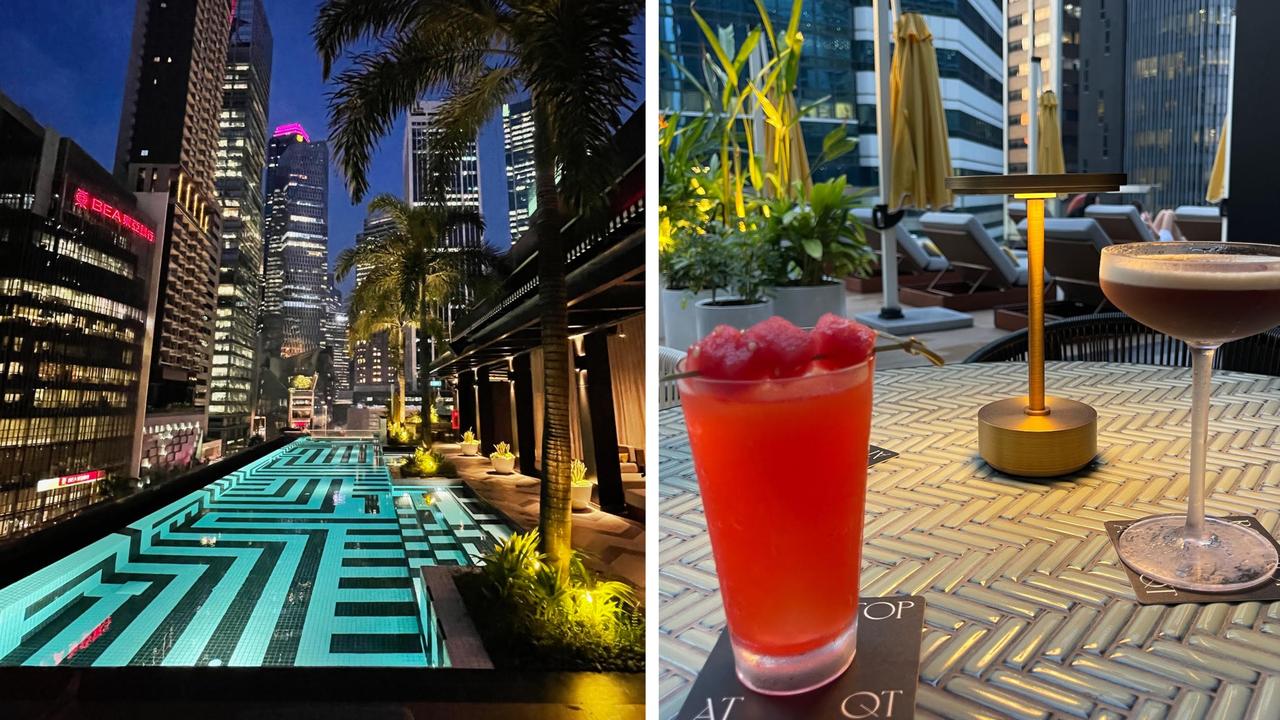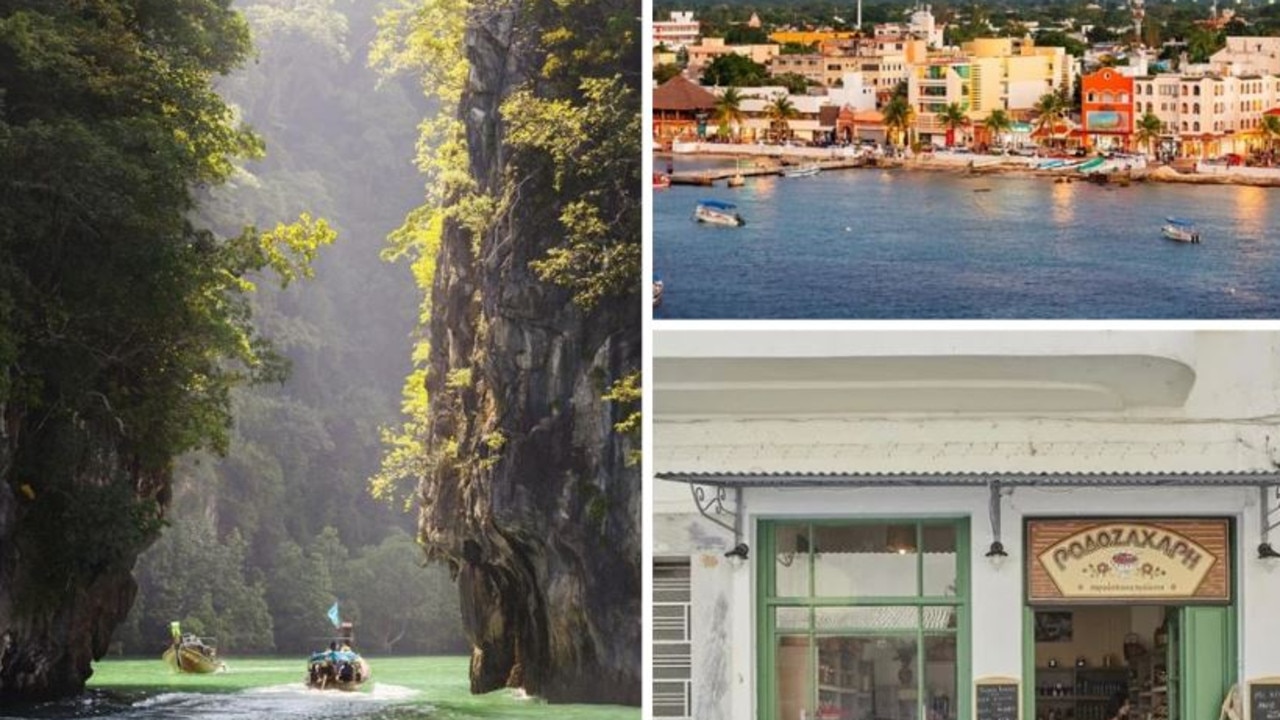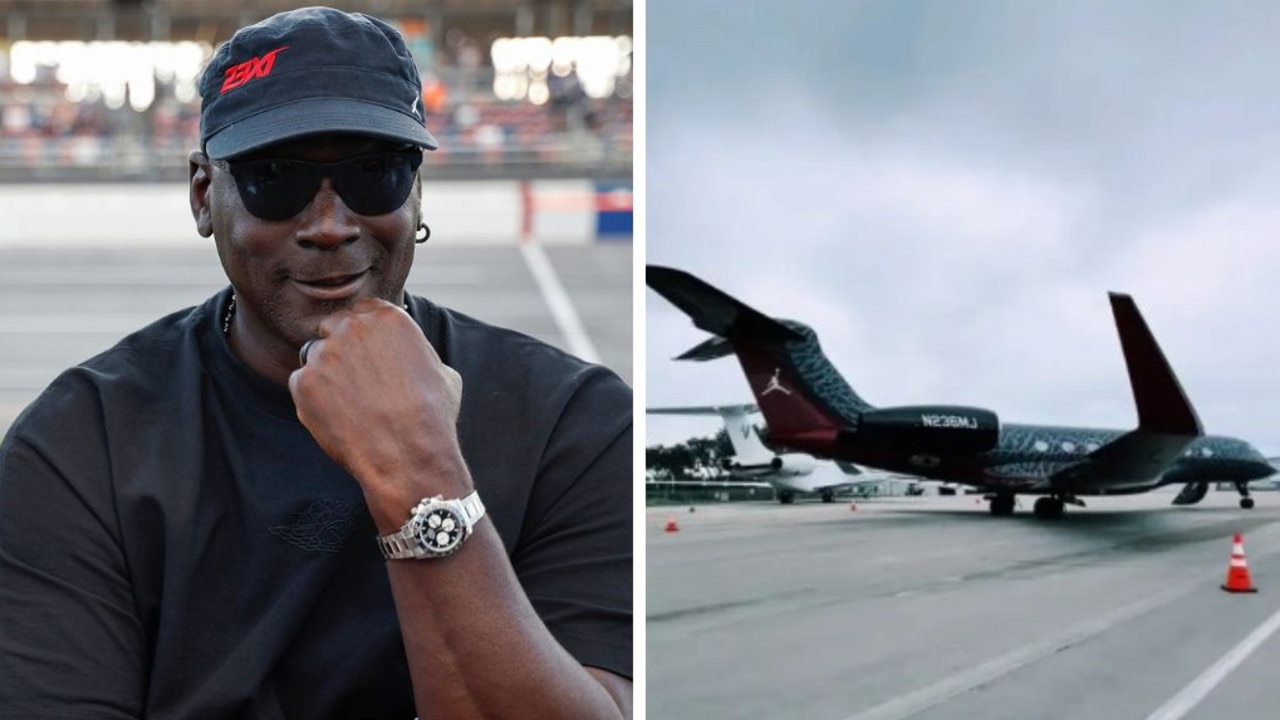Lunch on the Hawkesbury
A LUNCH cruise on the NSW Hawkesbury involves oysters, crabs and buckets of fun, writes Graeme Blundell.

'IT'S about having some fun, eating something and learning about the whole Hawkesbury experience," says this very large man called Fisherman Dave as we start off from Kangaroo Point, an hour north of Sydney, on the Crab'n'Oyster Cruise. We are aboard the custom-designed 12.5m, two-storey, twin-hull My Islander 2. I know these exact specifications because words pour out of Dave Broome – one-time local real-estate agent, postman, professional fisherman and trawler captain – in a comic torrent.
Dave – today our host, chef and raconteur – looks as if he has been hammered out of angle iron and his well-crafted spiel is as full of astute, hard-won observations about the Hawkesbury River fishing industry as it is laced with a kind of music-hall enthusiasm.
There are about 20 of us sitting at two long parallel tables facing him as he begins a wonderful routine that includes question-and-answer techniques, audience participation and a never-ending series of comic impressions. He takes turns on this thrice-weekly gig with his good mate Fisherman Gary (Gary Robinson) and, occasionally, the operation's owner, Jeff Rudge.
"The Hawkesbury is the great river on Sydney's doorstep, only an hour from town, you know," Dave is saying, dressed in jeans, company T-shirt, baseball cap and gumboots; a huge ginger moustache stretches around his mouth like a gigantic crab claw. "The scenery is spectacular, the environment is largely unspoiled, there's a wide range of heritage sites and the seafood is bloody amazing."
The Crab'n'Oyster Cruise specialises in local fresh seafood, of which we will eat a deal during the next 2½ hours, and in educating passengers on the local industries. "In the past five years we have seen Asian passengers consume around 15,000 dozen local oysters," Dave says. The trip is popular with overseas guests, attracted by some astute target-marketing by Rudge, who tracked down tour companies and even pursued coaches along the freeway so he could talk to the drivers about his cruises.
"We used to see the tourists taking photos from the nearby freeway and we had to work out a way to get them down here into the boat," Dave tells me.
Now the morning-tea cruise, in particular, is especially popular with Asian bus charters, first stop on excursions north from Sydney that also take in the Australian Reptile Park at Somersby, farther up the Pacific Highway, and end with pelican feeding at The Entrance on the NSW central coast.
Our cruise route winds from Kangaroo Point, just along the lower Hawkesbury from Brooklyn, and we drift northeast towards Mooney Mooney Point, past Spectacle Island Nature Reserve and into the vastness of Mooney Mooney Creek.
Fishing and tourism have always been the lifeblood of the Hawkesbury and Aborigines have feasted on its oysters for thousands of years. Their "kitchen middens" – big refuse mounds of shells, found in abundance along the river – have been carbon-dated to 6000BC. Oysters also have been a vital commodity for farmers and local communities.
Professional production began in the 1920s; oysters were grown on painted vertical mangrove stakes, though now trays and racks are used, often surrounded by a mesh fence to keep out predatory fish.
Dave's spiel relies on mime and facial expressions: he's obviously used to lecturing those not well-versed in English, but he's never patronising or condescending. He has the born comedian's ability to turn conversation into comedy and a moustache-twirling pause into timing.
The local oyster industry, the oldest aquaculture industry in NSW, used to be worth $4 million to $5 million a year. But with the outbreak of QX disease in June 2004, generations of oyster farmers were put out of business. Of the 25 oyster farmers, only one or two remain to pick up the pieces.
Originally known as "Queensland unknown", QX is caused by a protozoan parasite, Marteilia sydneyi, often responsible for the deaths of large numbers of oysters. The disease, more commonly found in the northern, warmer estuaries, was responsible for a decline of the oyster industry in southern Queensland and in the Tweed, Richmond and Clarence rivers of northern NSW in the 1970s.
Through the publicity surrounding the QX outbreak, many erroneously saw the Hawkesbury River as being polluted, Dave tells us, his eyes wide in the kind of comic disbelief that has earned him the moniker "the Hawkesbury's Steve Irwin".
QX is in fact a micro-organism that targets only the Sydney rock oyster and is harmless to humans. The remaining farmers worked to clean out all oysters and oyster leases. This process will take several years and in the meantime farmers harvest Pacific oysters, which grow in a quarter of the time of a Sydney rock oyster.
Dave's show is fully under way now, as the woman he calls Delectable Di (Di Robinson) serves drinks at the small fully licensed bar, which is decorated with a bamboo skirt like something out of South Pacific.
He stands in the boat's stern in front of a large barbecue and a stainless-steel blancher, pulling hessian sacks of oysters from hidden compartments, magically showing us how to open them with a shucking knife ("Always start at the 7 o'clock position on the shell, where it's softest, just past the hinge"). He also touts their aphrodisiac qualities. "Eat 12 oysters a day and put the Viagra away," he sings, channelling Rolf Harris, having found a guitar behind a crate.
Dave's guitar magically disappears and he manages to shuck a large number of the oysters at great speed with a fluid sleight of hand.
"Always turn it over when you've cut the muscle," he beams, sliding his knife to detach the buttery yellow oyster from the lower shell. "Because it's more handsome that way." His mincing delivery does the memory of Graham Kennedy proud.
As Delectable Di brings around plates of the bivalves, raw on the shell, on a bed of rock salt, with lemon slices and soy and chilli sauces, Dave steams several dozen on his barbecue using fish stock; some he flavours with garlic and chilli, others with lime and coriander. "I started steaming for the Asian market," he says. "They don't like them raw."
He works happily and industriously, the sweat like make-up on his weathered ginger face.
Suddenly he throws his arms out and shouts to the river: "Sometimes I think people have no idea the Hawkesbury exists."
Then he turns to his audience and seamlessly moves on to crabs, no crack in his quite astonishing routine. His banter astutely covers the anthropological history of the Hawkesbury, its prosperity and privation, abundance and scarcity, the interaction between environment and disease, and the proprieties of fishing etiquette, along with the tragedies and heartbreaks that, like the successes and fortunes of this riverine world, have ebbed and flowed as surely as the tides.
Sam, a pretty little girl of about seven in the audience, is handed a long harpoon and the boat heads off to Dave's crab pots, marked in the river by blue and red plastic bottles. We all sing heave-ho as Dave conducts and Sam pulls the crabs on board, the traps revealing several large muddies.
"Don't touch them," he tells her, now doing a piratical Johnny Depp. "They can bite yer finger off." Then he puts them to sleep, as he calls it, dropping them into a large tub of icy salt water. "It makes the crabs think it's wintertime," he says intently, then pours half a stubbie of beer into the mix, skolling the rest. The crabs are anaesthetised in minutes, each one worth $60 to $80 at Sydney market prices, according to our demonstrative leader, now holding one up by the claws forphotographs.
Dave then takes a blue apron, wraps it around his ample frame and starts cooking. Having blanched some crabs earlier, he finishes them off on his barbecue by steaming for five minutes with a dash of beer and light soy. Others he dunks in his blancher, 20 or 30 boiled upside down in salty water.
"I've taken the guts out because you're all Aussies," he says. "With the Asian tourists, I leave it all in because they love the innards. They scoop it all out and slurp it down." And then we eat, our boat bobbing gently opposite stands of mangroves on the muddy river banks, red posts marking rocky shoals, and the remains of a wooden wharf.
Blue swimmer and mud crabs, fresh schoolie prawns, slices of superbly fried mullet and more oysters, all served with chive-sprinkled potato salad, cos lettuce with mushrooms, olives and capsicum, and spinach with cherry tomatoes. The trip costs $89 a person but it's hard not to reckon we eat almost that much in crab claws alone. Although it is possible the bottle of Hunter Valley Stonehurst Cedar Creek Semillon ($20) has clouded our judgment.
What is certain, though, is that this cruise is grassroots regional tourism at its most vivid, picturesque and professional: something Australia is doing very well at many levels these days.
Maybe many of us have become blase about the abundance of coastal seafood, but Fisherman Dave's eloquent lesson (and his songs about Ollie the Oyster and the Mud Crab's Revenge, with which he serenades us home) is that we should never take for granted what is in our own backyard.
Graeme Blundell was a guest of Crab'n'Oyster Cruise.



